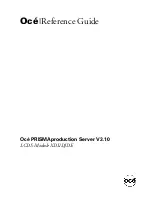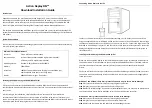
16
Operation
17
6.
Out-of-round, soft, mushy, or wet balls will affect accuracy of pitches and
must not be used. Mixing different types of balls (leather, rubber, JUGS,
etc.) will affect consistency of pitches. Throw only one type of ball at a
time.
7.
Use only JUGS dimpled style, Lite-Flite, Softie, poly softballs or high
quality leather softballs in this machine.
8.
Do not permit more than one or two persons around the pitching machine
during its operation.
BATTING HELMETS MUST BE WORN AT ALL TIMES.
9.
Operators of Jugs Pitching Machines must wear safety glasses and
batting helmets at all times.
WARNING:
A pitching screen must be used to protect the operator and
the machine from batted balls.
NOTE: We suggest that each operator spend a couple of hours
experimenting with the JUGS Softball/Super Softball pitching
machine. (You may want to jot down the wheel position and speed
dial settings in the space provided on page 23 for future reference).
Try many different speed settings. Do not be afraid that any setting
you make will harm the pitching machine; however, you should use a
wide backstop when experimenting with faster speeds.
10. At the beginning of practice, or after any change in speed, or trajectory,
have the batter stand well clear while a sufficient number of test balls are
thrown to make certain the machine is properly aimed at the intended
target. If you move the machine for any reason, repeat this process.
11. Throw balls at speeds the batter can learn to hit. As the batter’s skills
increase you can throw faster pitches. Always pitch balls at a speed
suitable for the age and skill level of the batter. Pitches thrown too fast will
be counterproductive and dangerous.
12. Place ball into Feed Chute and watch the trajectory of the ball.
13. Increase the speed of the pitch by turning the dial clockwise on the Digital
Readout Panel (see Figure 6).
•
When you increase speed of any pitch, you must lower the elevation
of aim; when you decrease the speed, you must increase the aim
elevation.
14. To regulate the height of the pitch:
•
Hold the Feed Chute Handle and loosen the vertical T-Clamp.
•
Move the feed chute TOWARDS home plate for a lower pitch.
Move the feed chute AWAY from home plate for a higher pitch.
•
Hand tighten the vertical T-Clamp.
WARNING:
NEVER loosen the vertical T-Clamp without holding the
Feed Chute Handle.
15. To regulate the direction of the pitch:
•
Loosen the horizontal T-Clamp.
•
Grasp the Feed Chute Handle and move the “top” of the JUGS
sideways until the chute is aimed at the desired target.
•
Hand tighten horizontal T-Clamp.
NOTE: When throwing faster pitches, be sure to line up horizontal T-Clamp
over the red dot on the base and then tighten the horizontal T-Clamp.
To make small lateral adjustments (for example, from “outside
corner” pitches to “inside corner” pitches) simply “shift” the legs of the
pitching machine slightly by gently tapping the legs with your foot. Be
sure to throw test balls to ensure pitch location before pitching to
batter.
▲
!
▲
!
Operation
Super/Softball Instr.032905 3/31/05 9:02 AM Page 18



































